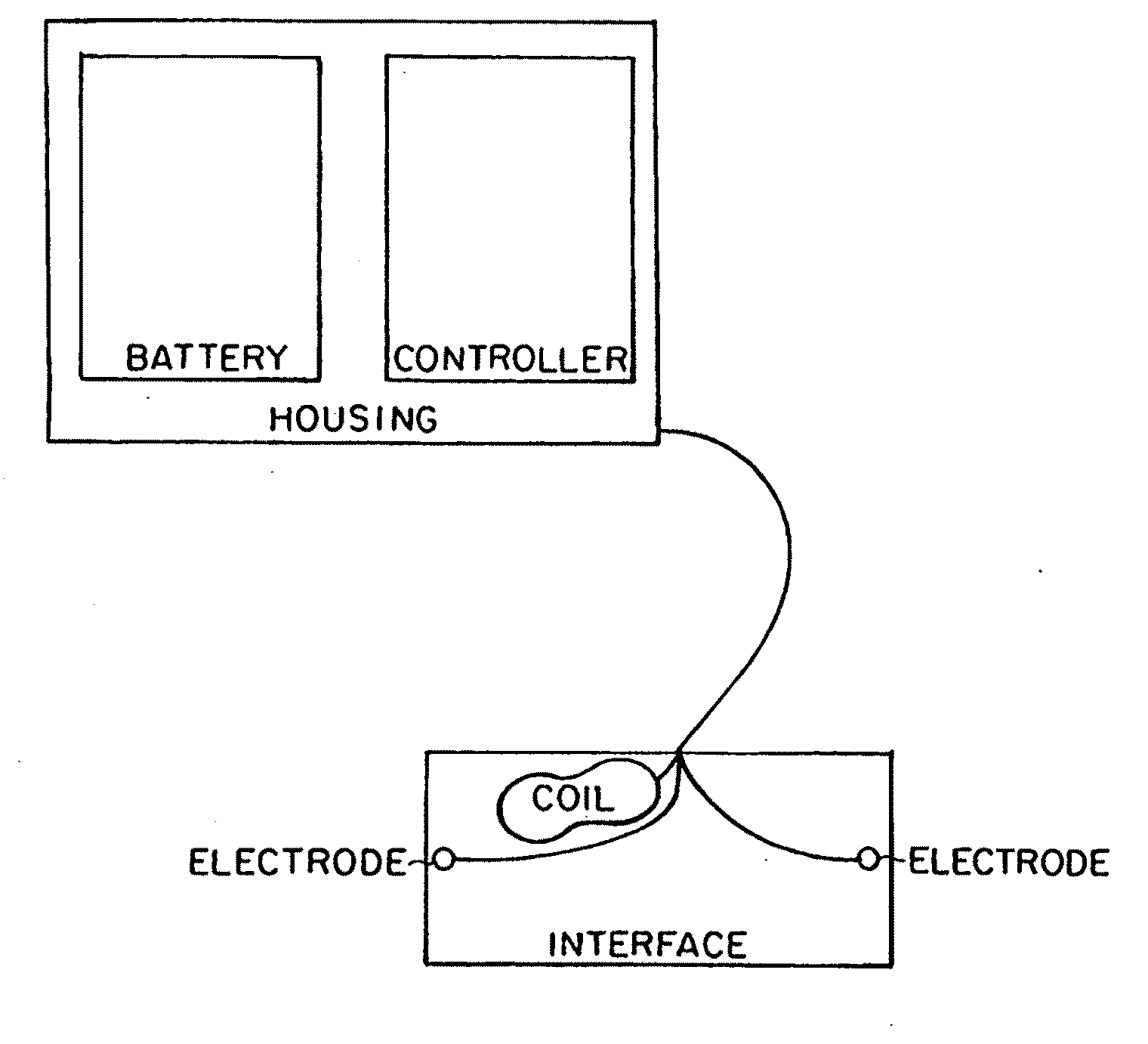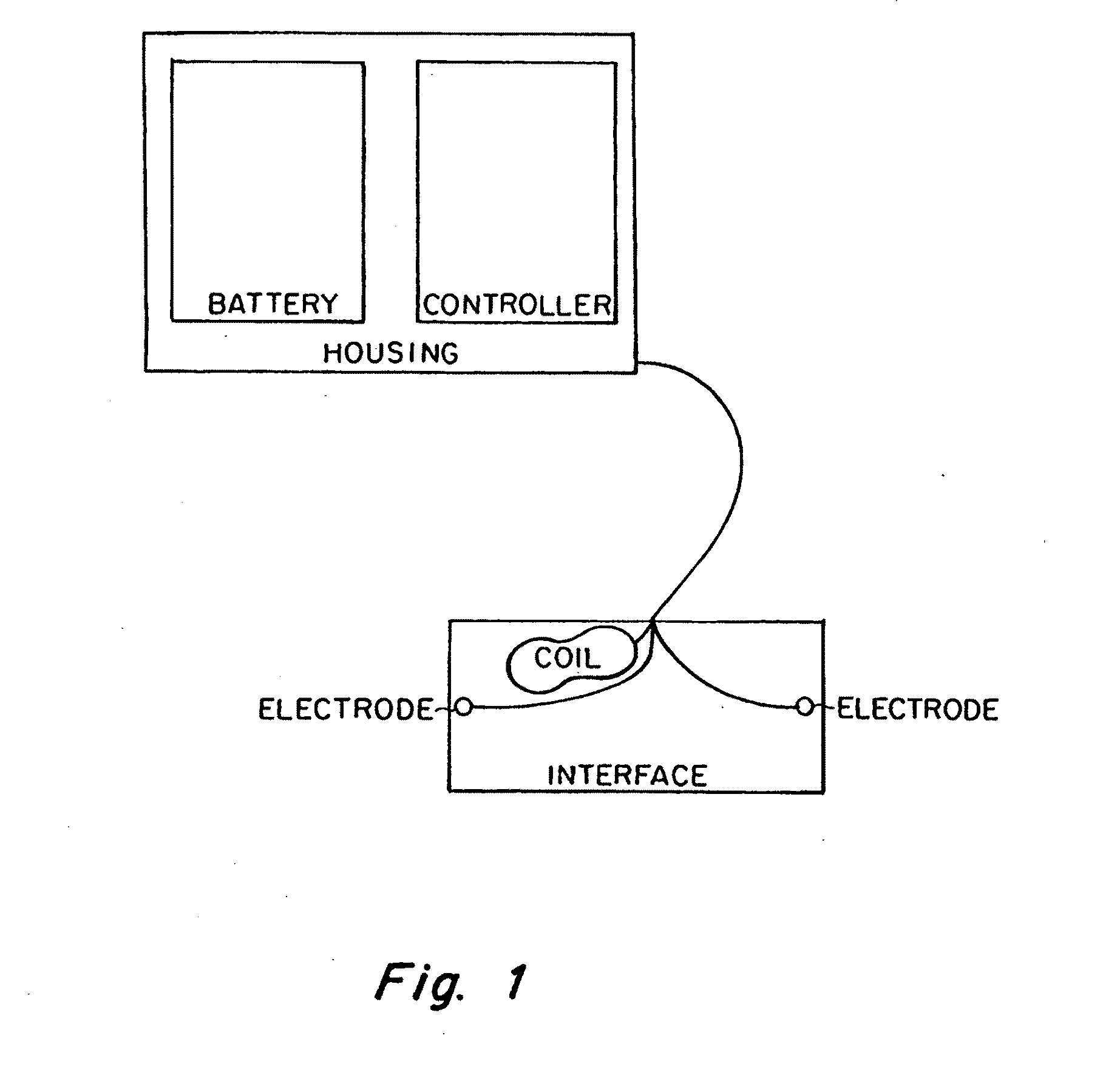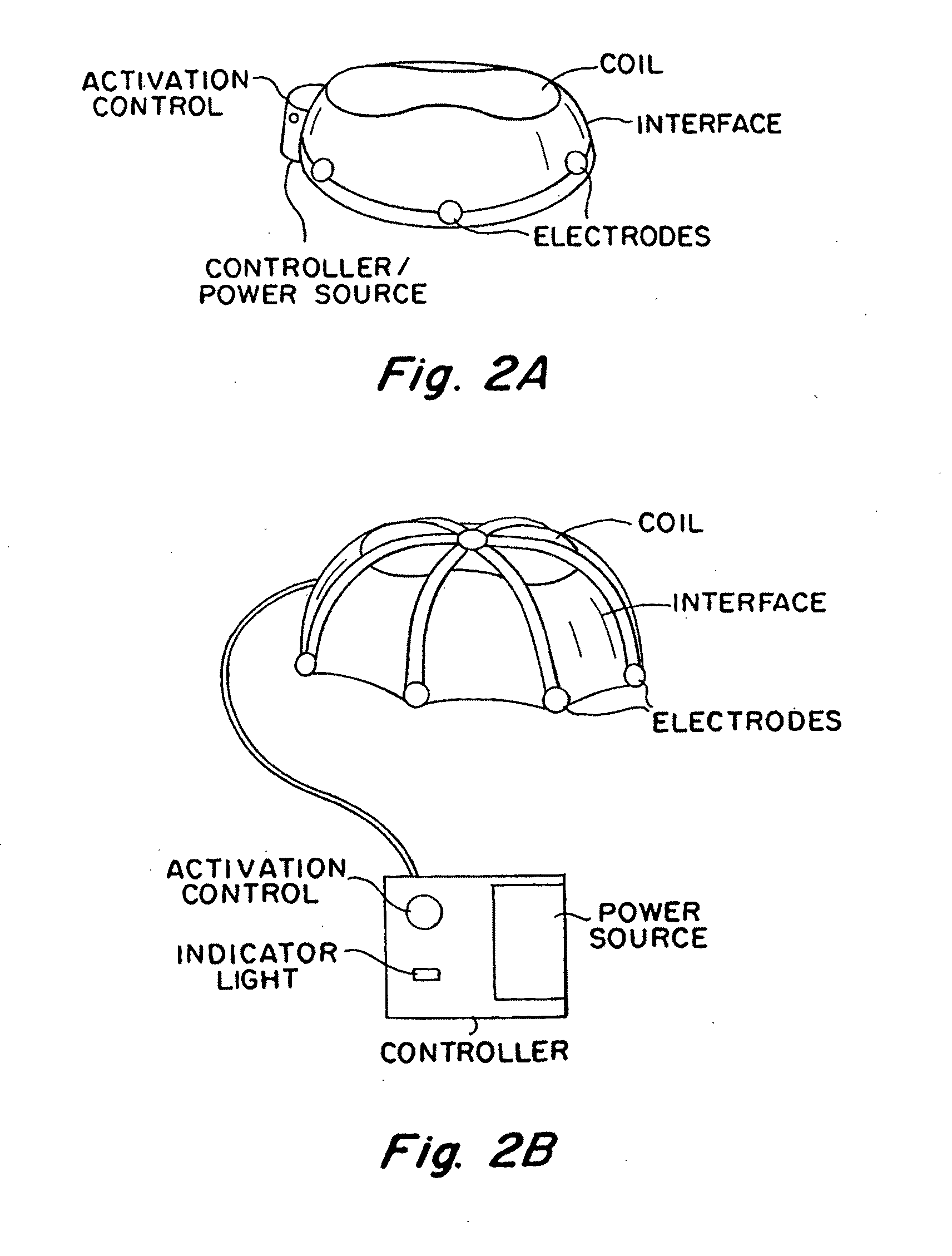Transcranial magnetic stimulation (TMS) methods and apparatus
a transcranial magnetic and stimulation technology, applied in the field of transcranial magnetic stimulation, can solve problems such as unintended and undesirable side effects, and achieve the effect of preventing epilepsy
- Summary
- Abstract
- Description
- Claims
- Application Information
AI Technical Summary
Benefits of technology
Problems solved by technology
Method used
Image
Examples
example i
[0106]Anti-seizure effect of daily 1 Hz repetitive transcranial magnetic stimulation (rTMS) in a case of pediatric Rasmussen's encephalitis.
[0107]1 Hz rTMS was applied in daily sessions over the affected hemisphere to ameliorate intractable nearly-continuous right anterior focal seizures in a 14-year-old boy with progressive focal epilepsy, left hemiparesis and right hemisphere atrophy.
[0108]As explained above, rTMS is a method for noninvasive focal cortical stimulation that is based on the principles of electromagnetic induction. During rTMS small intracranial electrical currents are generated by a powerful fluctuating extracranial magnetic field. Low frequency (1 Hz) rTMS is emerging as a new therapeutic tool in epilepsy with a limited number of reports showing the capacity of rTMS to reduce seizure frequency and to interfere with ongoing seizures. We present a case of gradual seizure reduction with recurrent daily rTMS in a pediatric patient with Rasmussens encephalitis. The pati...
example ii
[0112]As shown in FIGS. 11A-11E, TMS methods were adapted for application to gently-restrained, seizing rats. EEG readings were recorded with three subdermal wire electrodes (SWEs), One SWE was placed on the torso to record EKG and two more wires were used as antennae to detect the TMS pulse and to identify timing of the pulse. Torso restraint permits clinical observation of seizures and full access of the head to the TMS coil. Slew-rate limited preamplifiers were included in series to the EEG acquisition system to minimize TMS-related amplifier saturation, as represented by FIGS. 12A and 12B, which show a reduced TMS artifact with slew-rate limited pre-amplifier.
[0113]Seizures were Induced with intraperitoneal kainate (KA) 11 mg / kg in young adult male Long-Evans rats, Real-time EEG was recorded and assessed for seizure discharges. A 0.5H rTMS was applied during seizures with a figure-8 coil positioned overhead. A set of rats was sacrificed and perfused 2.5 hours after KA na KA+0.5 ...
example iii
[0115]EEG and TMS techniques were combined to enables a closed-loop system where seizures were recognized and treated with an electrical current induced by a fluctuating extracranial magnetic field. As shown in FIG. 13, a spontaneous seizure in a rat was recognized and terminated with TMS.
PUM
 Login to View More
Login to View More Abstract
Description
Claims
Application Information
 Login to View More
Login to View More - R&D
- Intellectual Property
- Life Sciences
- Materials
- Tech Scout
- Unparalleled Data Quality
- Higher Quality Content
- 60% Fewer Hallucinations
Browse by: Latest US Patents, China's latest patents, Technical Efficacy Thesaurus, Application Domain, Technology Topic, Popular Technical Reports.
© 2025 PatSnap. All rights reserved.Legal|Privacy policy|Modern Slavery Act Transparency Statement|Sitemap|About US| Contact US: help@patsnap.com



